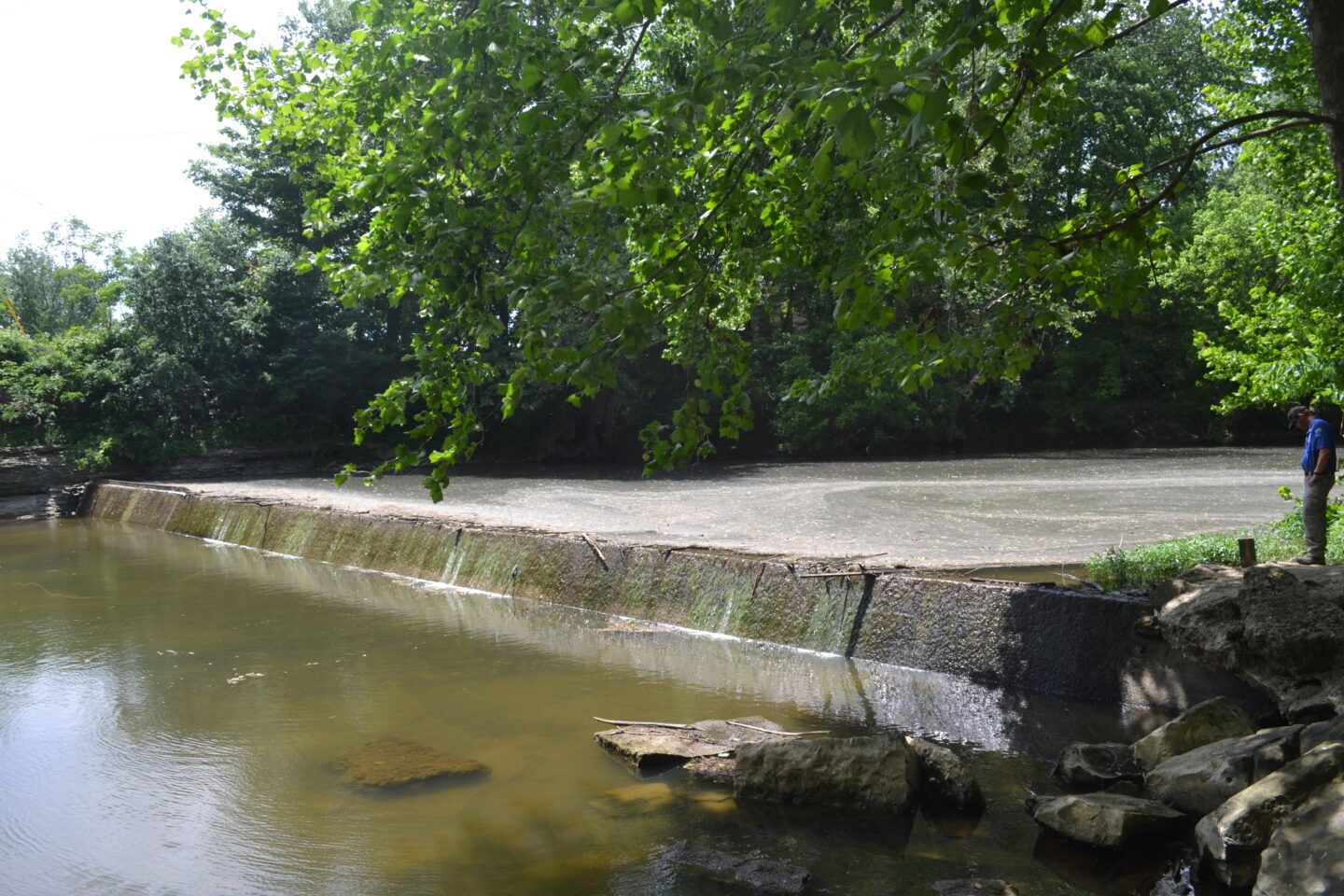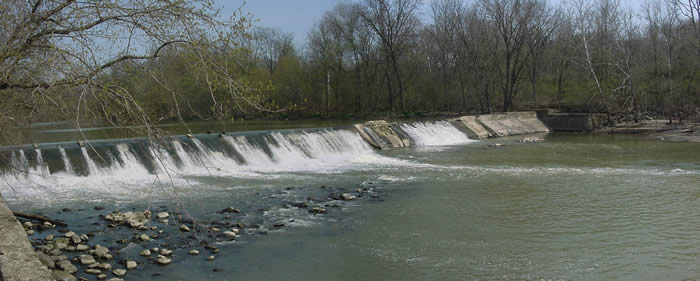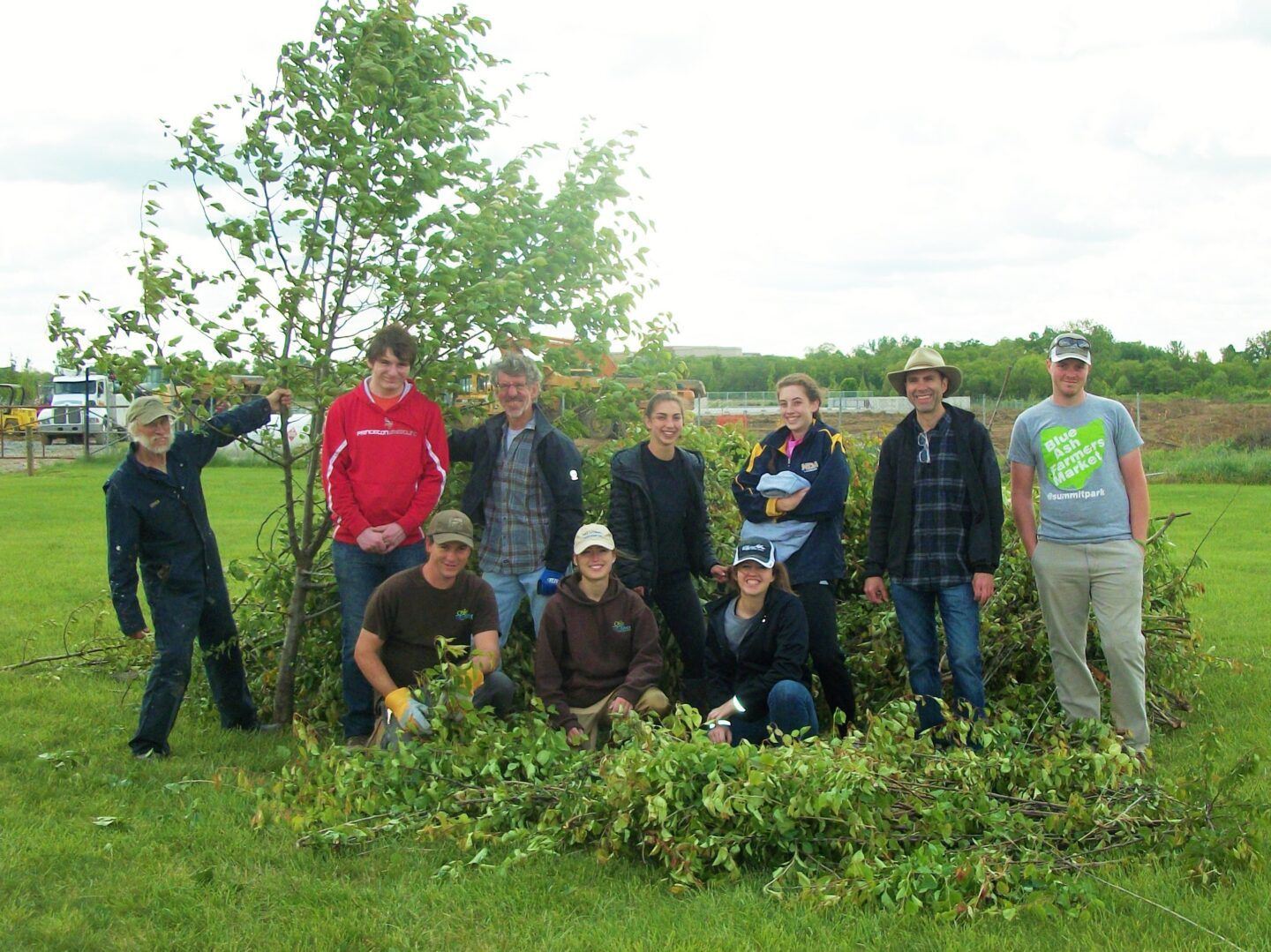Ohio River Foundation Received a $106,200 Grant for the Owingsville Slate Creek Dam Removal.
Summary
The Owingsville Slate Creek Dam Removal Project is a collaborative effort by the City of Owingsville, Ohio River Foundation (ORF), and U.S. Fish & Wildlife Service to restore flow and habitat for the fish and wildlife of Slate Creek. ORF successfully obtained requisite funding from USFWS to assist the city with removing this dam.
This is 100 foot wide dam that prevents the natural flow of water through Slate Creek and impedes fish movement throughout the Slate Creek and Licking River watersheds. The dam no longer serves any purpose, but it poses a danger to public recreation, impedes natural sediment and gravel movement (based upon evidence of sediment and gravel storage upstream of the dam), and supports algal blooms within ½ upstream of the dam.
This project will involve removal of this 6 foot high wall dam that will restore natural variability in river flows and reconnect fragmented river habitat to allow access to historic spawning and nursery grounds, and improving fish passage and mussel habitat and migration. Slate Creek is a tributary of the Licking River which is a tributary of the Ohio River. Removal of the barrier will also reduce the amount of erosion in the creek by lessening the opportunity of artificial pool creation upstream of the site and associated sloughing and creek bank erosion.
Also, government agencies are increasingly sensitive to concerns about nutrient loading and associated algal blooms. A secondary benefit of removing dams is to reduce algal blooms occurring in slack water areas created by dam impoundment of water.
The dam owner is eager to remove this dangerous paddling and swimming hazard, and also aid the restoration of Slate Creek and the Licking River. The City of Owingsville also believes that removal of this dam will encourage others in the region to also consider supporting similar dam removals. Partner contributions will cover (in part) salary, labor, contracting services, some material costs, and operations for project oversight and biological monitoring.
Furthermore, by financially assisting the city in performance of this project we are encouraging solutions to one problem (recreation) that also solve another (fish passage). This type of thinking is new to restoration partner development and this project will have the effect of encouraging more communities to consider similar types of multi-problem solving solutions.
This project is scheduled to be completed in 2016.



